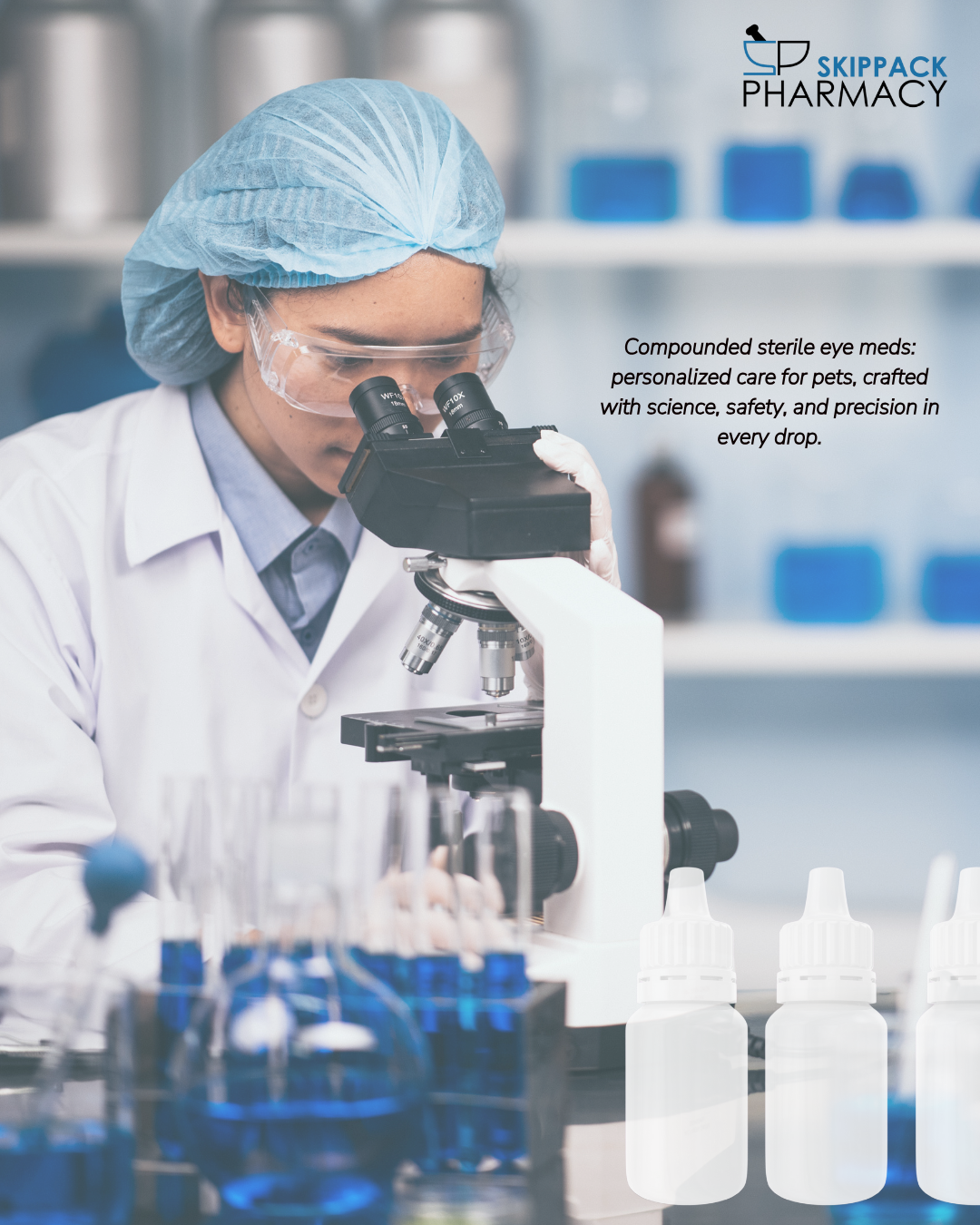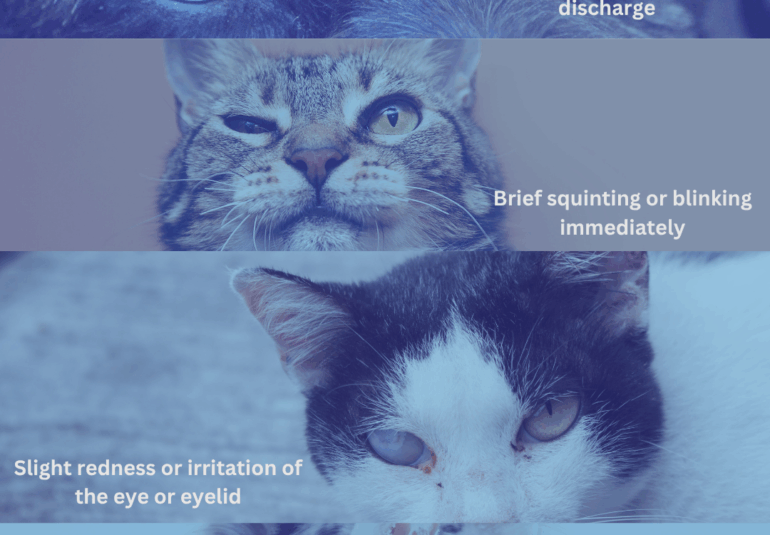
- Pet/Vet
-
by Skippack Pharmacy
How high-quality sterile eye medications for pets are compounded
Pets with eye conditions such as infections, inflammation, ulcers, or glaucoma often require customized medications that aren’t commercially available. In these cases, compounding pharmacies play a vital role by preparing sterile ophthalmic formulations tailored to the specific needs of the animal. But how exactly are these medications made—and what ensures they are safe and effective for your pet’s eyes? Let’s go behind the scenes to explore how sterile eye medications are compounded with precision and care.
Why Compounded Sterile Eye Medications Are Needed
Veterinary patients often require unique concentrations, ingredients, or formulations that are not manufactured commercially. A cat with a viral eye infection may need a specific antiviral eye drop, while a dog with dry eye might require a preservative-free version of a common medication. Compounding allows pharmacists to create custom medications that meet these individual needs, while ensuring they are appropriate for use in such a delicate area—the eye.
The Controlled Environment: USP <797> Compliance
Compounding sterile eye medications requires a specialized, controlled environment that complies with USP <797> standards, which outline best practices for sterile preparation. These medications are made inside a cleanroom suite or a laminar airflow workbench (hood) that filters air and maintains a sterile field. Staff must wear sterile gowns, gloves, masks, and hair covers to reduce the risk of contamination. The room’s airflow, pressure, temperature, and particle counts are continuously monitored. All raw materials used in compounding—such as active pharmaceutical ingredients (APIs), sterile water, and buffers—are tested for quality and sourced from FDA-registered suppliers. Only sterile or sterilized components are used in ophthalmic preparations to protect the eye from harm.
The Importance of Sterility in Ophthalmic Compounding
Eye medications must be compounded under strict sterile conditions to prevent contamination and infection. Unlike oral medications, eye drops and ointments are introduced directly into the eye, bypassing the body’s usual defense systems. Even a small amount of microbial contamination can cause serious complications, including corneal infections or vision loss. That’s why pharmacies that prepare sterile ophthalmic products must follow rigorous guidelines to protect the safety of the patient.
Quality Control and Testing
To ensure safety, pharmacies perform rigorous quality control testing on sterile ophthalmic compounds. This may include:
- Sterility testing to confirm no bacterial or fungal contamination
- pH and osmolarity checks to match the natural environment of the eye
- Visual inspection for clarity, particulates, and consistency
- Potency testing (when required) to confirm accurate dosing
These tests help ensure that each batch meets strict standards before it ever reaches a pet’s eye.
Precision and Care for Your Pet’s Vision
Compounded sterile eye medications offer pets access to high-quality, tailored treatments that support healing and comfort. Behind every bottle is a careful, science-driven process that prioritizes safety, sterility, and accuracy. By working with trusted compounding pharmacies, veterinarians and pet owners can feel confident that their animal companions are receiving medications as precise and safe as those used in human care—because your pet’s vision is worth it.

